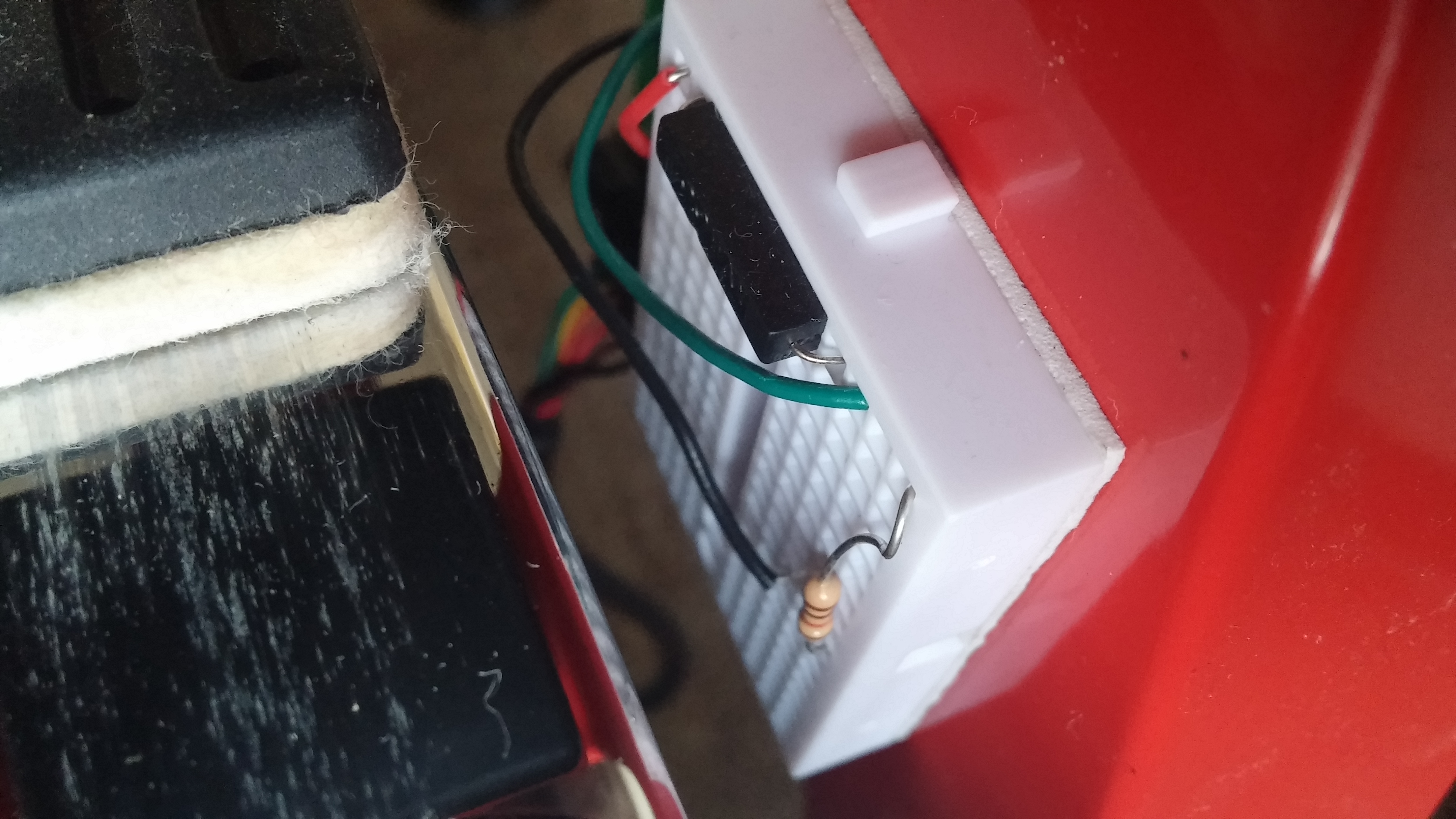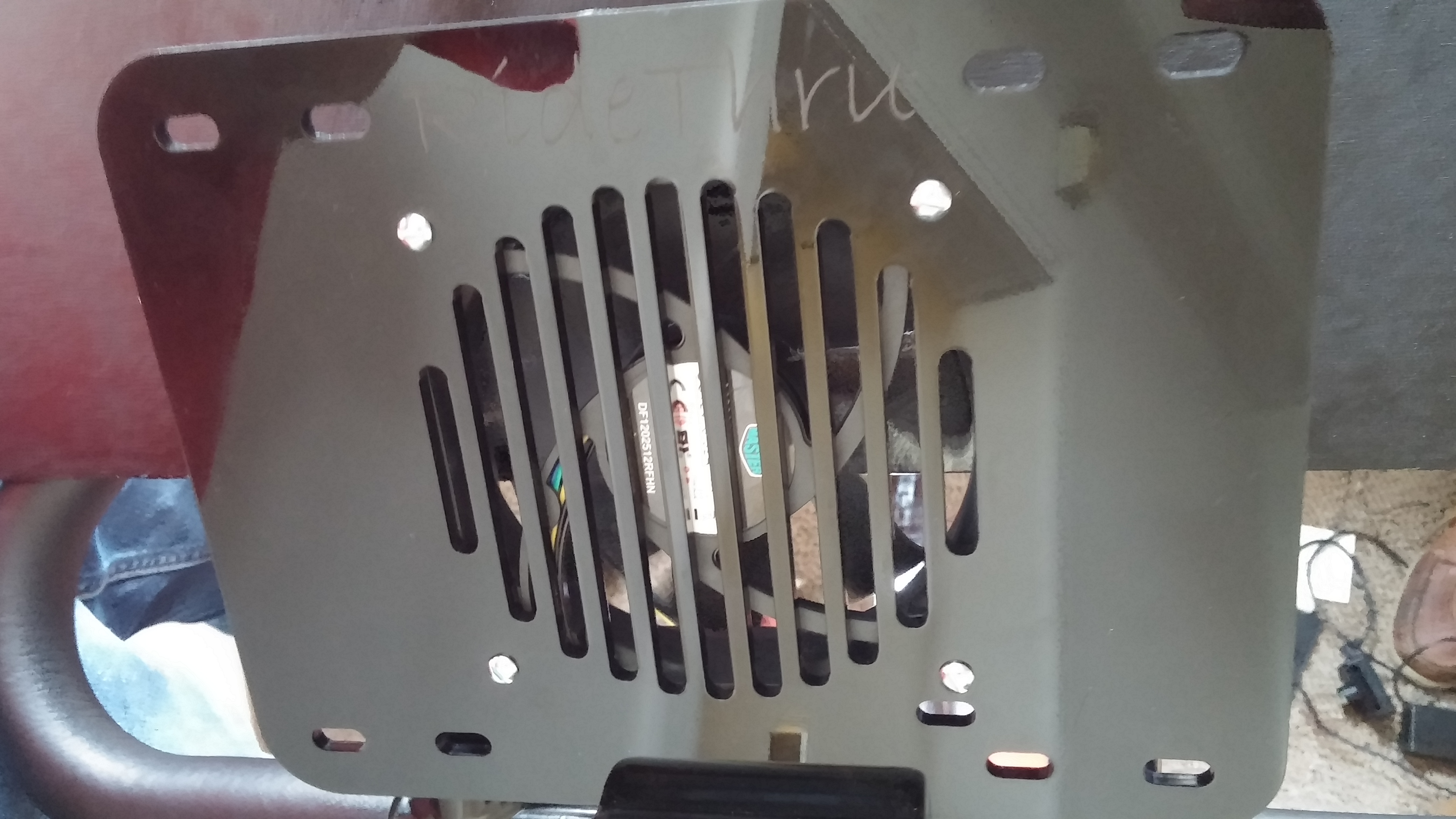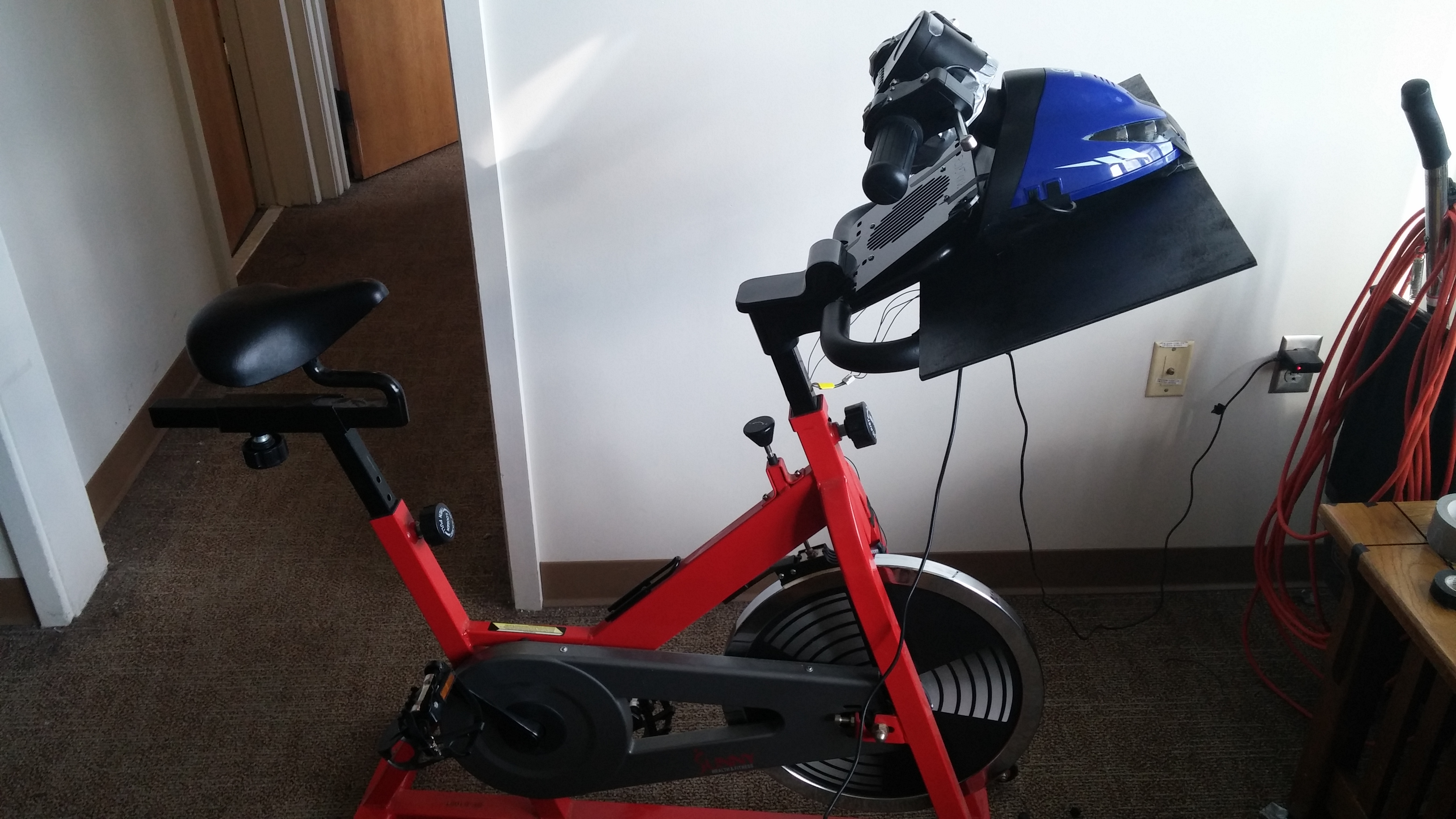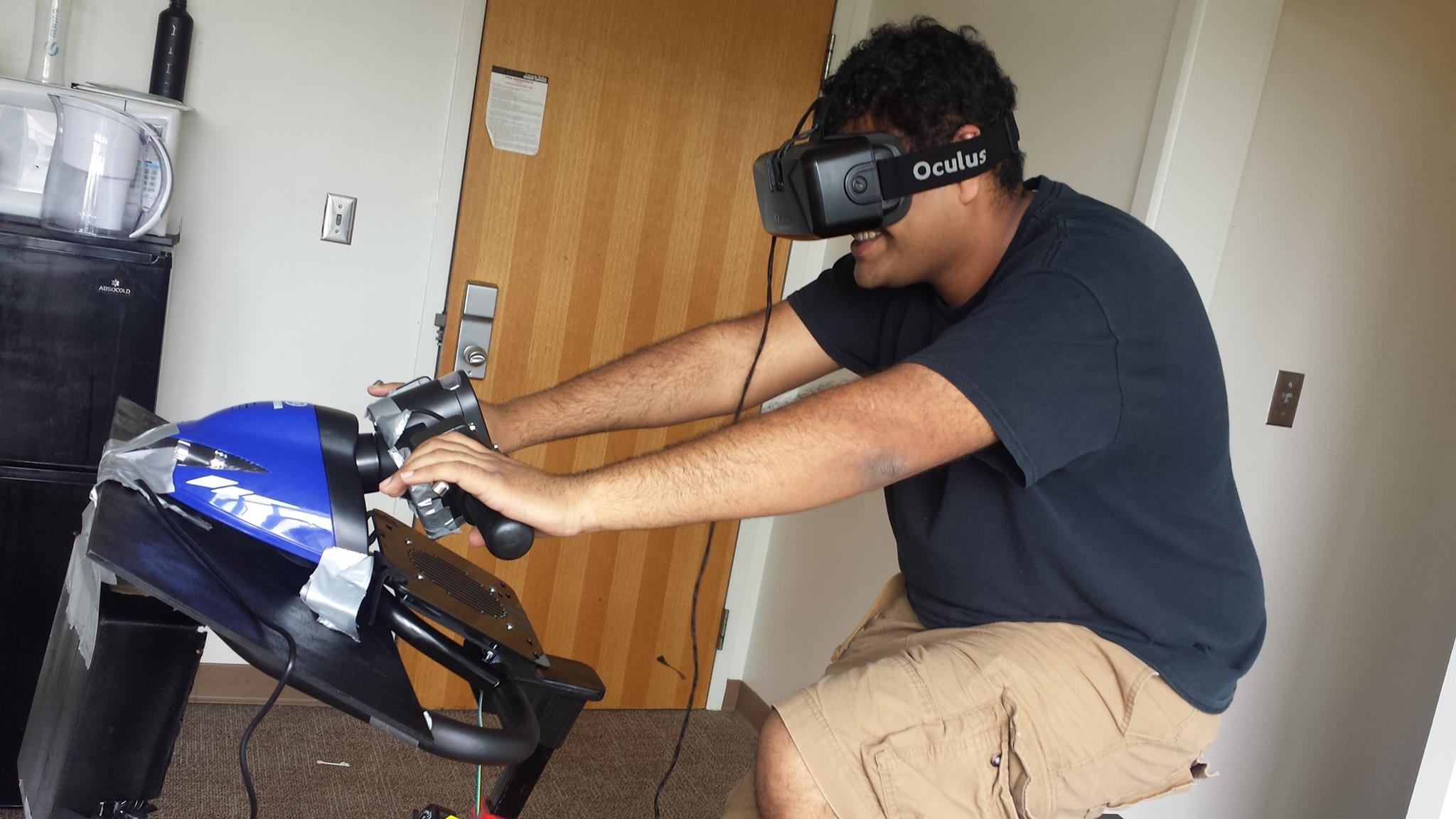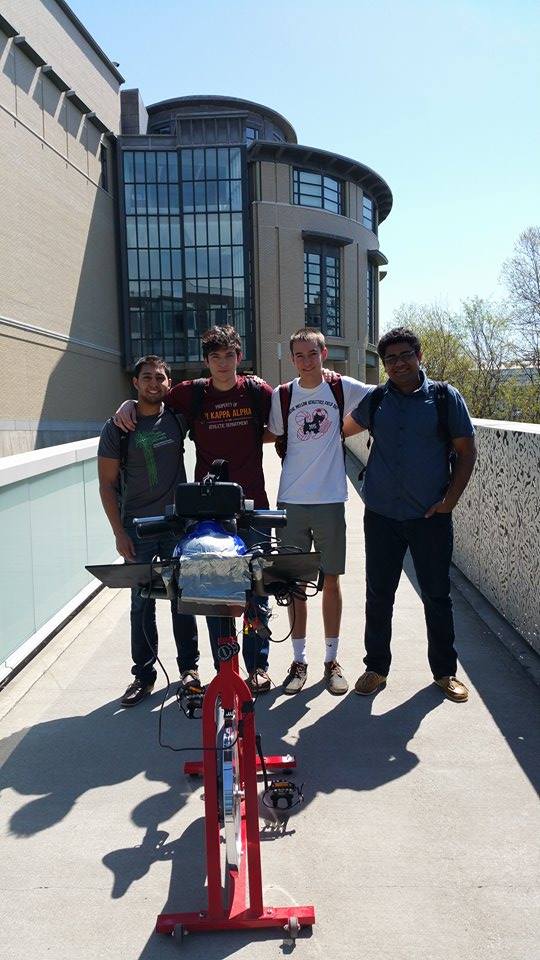Concept
RideThru transforms a dull stationary bike workout into a virtual reality experience that will make exercising more fun. Combining sensors, a spin bike and an Oculus Rift, a user will experience virtual terrains and live video game action all from the bike.
Motivation
Stationary bikes are a very popular indoor exercise choice. Many people would prefer outdoor biking but due to weather, busy schedules, or other reasons, stationary bike exercises become the next best workout. The most predominant issue with them is that they are extremeley boring since they are not actually moving anywhere. Furthermore, if people don't enjoy some workout, they are less likely to continue working out. Ride through will make this type of workout fun by allowing users to play games or ride through new terrains in virtual reality. Ultimately this will encourage people to stay healthy as much as possible.
Competition
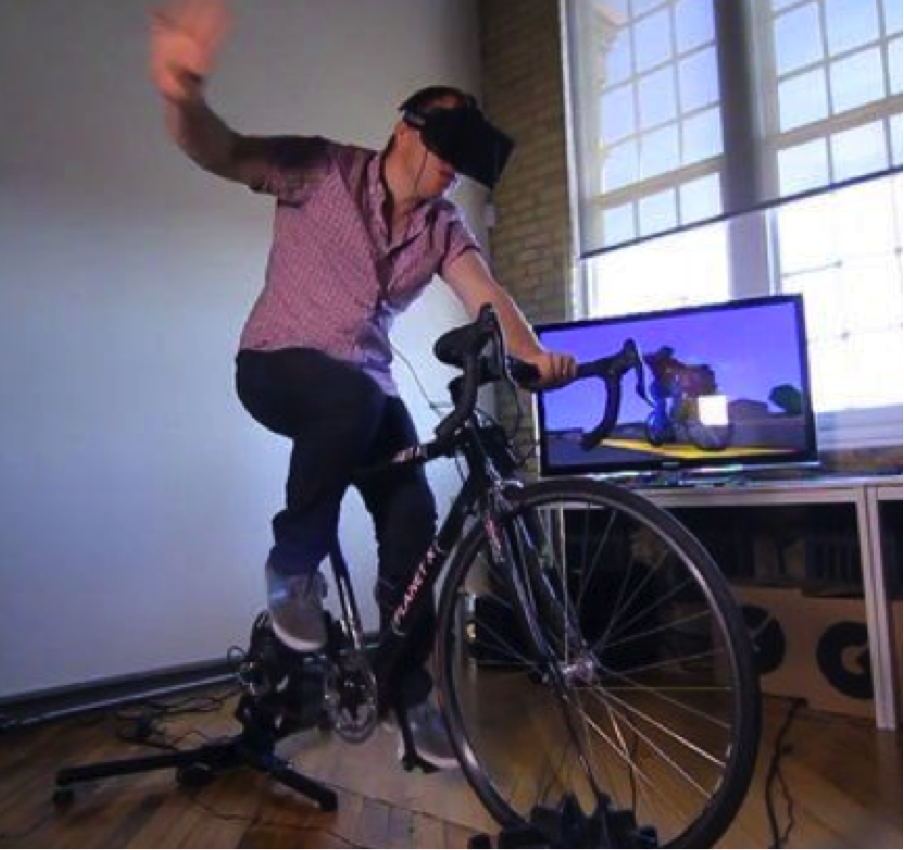
PaperDude VR
Virtual reality paperboy simulation implemented using a physical bike. This was created for a different context on just one game. It uses Kinect to track body movements
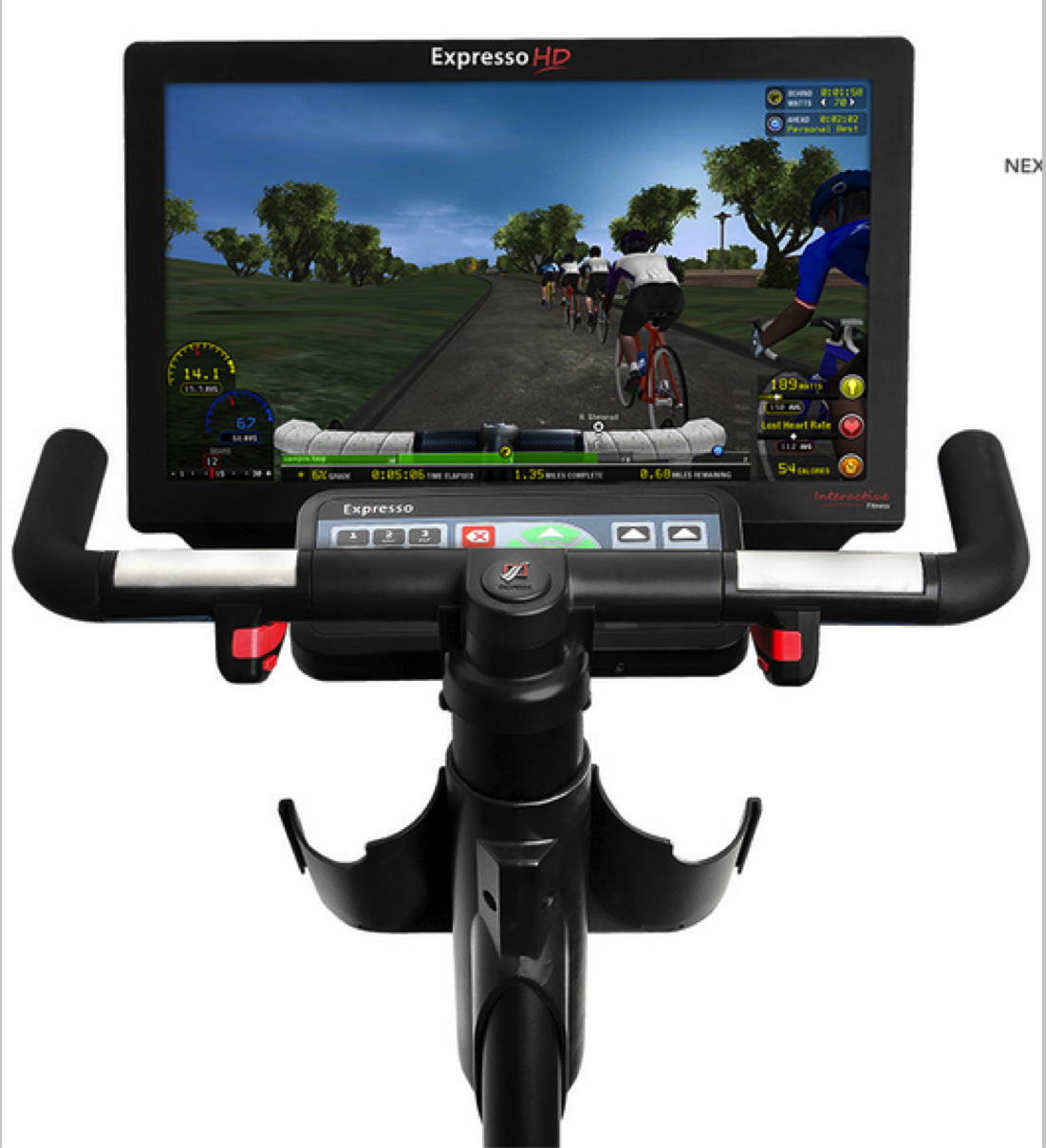
Expresso
An interactive bike workout machine. This is an extremely expensive product, starting at $4000 and is targeted to high end gym's as a all-in-one bike entertainment solution






